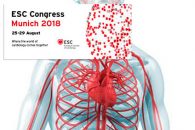Published 5-year results had been neutral for bilateral vs. single internal-thoracic artery grafts, but, at the time, surgeons argued that the time period analyzed was not enough and that a difference would be observed after 10 years of follow-up, once the trial finished. Such follow-up was presented at the European Society of Cardiology (ESC) Congress 2018…
ESC 2018 | CULPRIT-SHOCK: 1-Year Results Continue to Support Treatment of the Culprit Artery Only
Increases in the rates of revascularization and heart failure do not justify the early mortality advantage shown by treatment of the culprit artery only in patients with acute myocardial infarction and cardiogenic shock. The 1-year follow-up of the CULPRIT-SHOCK trial reinforces the idea of only treating the culprit artery, with an option for revascularization of…
ESC 2018 | MATRIX: 1-Year Superiority of Transradial Access
Transradial access should be the access of choice in patients with acute coronary syndrome, while bivalirudin has not shown any benefit for this population. The long-term follow-up from the MATRIX (Minimizing Adverse Hemorrhagic Events by Transradial Access Site and Systemic Implementation of Angiox) trial confirms the results at 30 days: transradial access is here to stay…
ESC 2018 | FUTURE: A Thorn in FFR and More Questions than Answers
As observed at the preliminary analysis that motivated the FUTURE trial early termination, the use of fractional flow reserve (FFR) to guide revascularization in an unselected population with multivessel disease was associated to twice the mortality rate in one year, with no beneficial impact on other end points. Even though the combined end point of…



